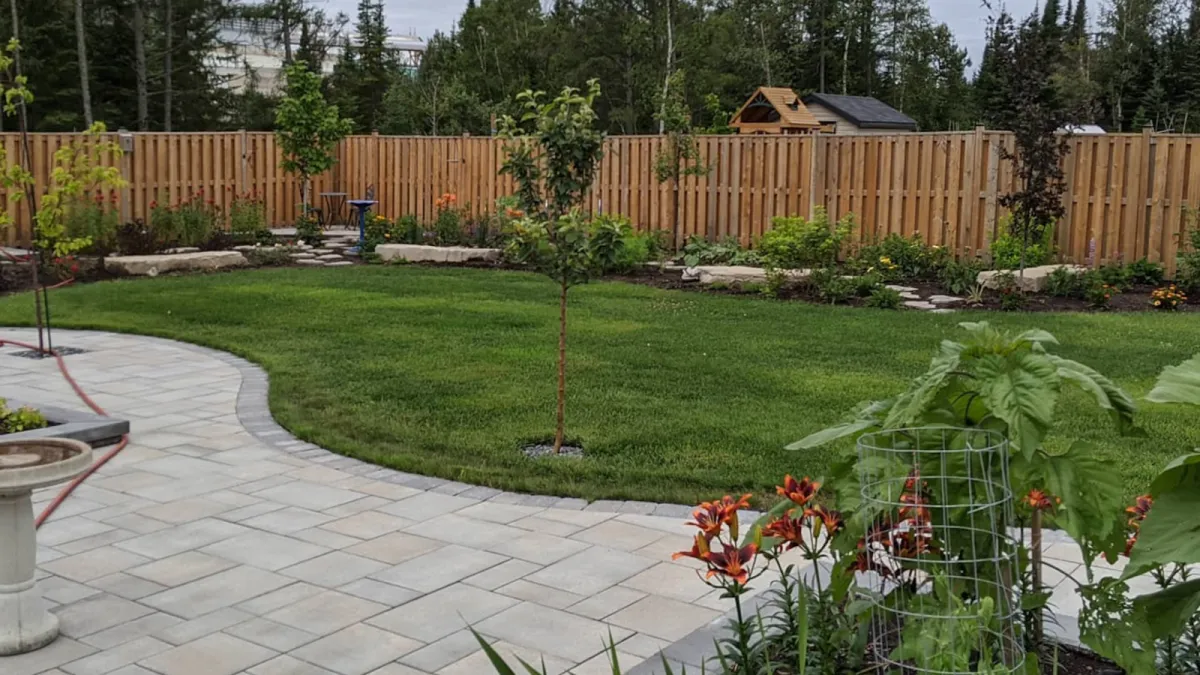Our Blogs

What Are The 5 Elements Of Landscape Design?
The five essential elements of landscape design are color, form, line, scale, and texture. Color adds vibrancy and sets the mood of the space. Form involves the shapes and structures of plants and objects. Line directs the viewer's eye and establishes visual flow. Scale ensures that all elements are proportionate and harmonious. Texture provides depth and interest through the surface qualities of different materials and plants.
Landscape design is an art and a science that involves the deliberate arrangement and modification of outdoor spaces for aesthetic and practical purposes. The five key elements of landscape design - color, line, texture, form, and scale - are essential in creating a harmonious and visually appealing landscape. Understanding and effectively utilizing these elements can transform any outdoor space into a beautiful and functional environment. At MD Landscape & Design, we pride ourselves on incorporating these elements into our projects, providing top-notch landscaping services in Thunder Bay.
Key Takeaways:
Color: Use warm colors to create energy and cool colors to impart calm.
Line: Straight lines for formality, curved lines for a natural feel.
Texture: Combine contrasting textures for visual interest.
Form: Utilize geometric forms for structure, natural forms for a relaxed look.
Scale: Ensure proportional relationships for harmony and balance.
The Five Elements of Landscape Design
1. Color
Color is a powerful tool in landscape design, capable of setting the mood and adding visual interest. Warm colors like reds and yellows tend to advance towards the viewer, creating an energetic and vibrant atmosphere. In contrast, cool colors such as blues and greens recede, imparting a sense of calm and tranquility. By strategically placing colorful plants and hardscapes, designers can highlight specific areas and create a cohesive, inviting space.
2. Line
Lines in landscape design guide the eye through the space and establish flow and direction. Straight lines convey formality and structure, making them ideal for formal gardens and pathways. Curved lines, on the other hand, create a relaxed and natural feel, perfect for informal gardens and meandering walkways. The use of lines can direct attention to focal points such as sculptures, water features, or a beautiful tree.
3. Texture
Texture refers to the surface quality of landscape elements, both visual and tactile. It includes the texture of plant leaves, bark, and hardscaping materials like stone and wood. Contrasting textures can add depth and interest to the landscape. For instance, the smoothness of a lawn can be complemented by the roughness of a stone pathway or the soft foliage of ornamental grasses. Texture plays a crucial role in creating a dynamic and engaging landscape.
4. Form
Form relates to the shape and structure of landscape elements. It encompasses the three-dimensional aspects of plants, trees, and hardscaping features. Formal gardens often use geometric forms like clipped hedges and symmetrical plantings to achieve a structured look. Informal gardens, however, embrace more natural and flowing forms. The careful selection and placement of forms can define spaces, create balance, and enhance the overall aesthetic of the landscape.
5. Scale
Scale is the proportional relationship between landscape elements and the overall space. Proper scale ensures that all elements fit harmoniously within the landscape. For example, a large tree can overpower a small garden, while small plants might get lost in a vast space. Designers must consider the size of each element in relation to the surrounding area to create a balanced and visually pleasing composition.
The Importance of Landscape Design in Urban Areas
Urban areas often suffer from a lack of green spaces, making landscape design crucial for enhancing the quality of life. Thoughtfully designed landscapes can reduce stress, improve air quality, and provide recreational areas for residents. By incorporating green roofs, vertical gardens, and pocket parks, urban landscapes can become more sustainable and livable. Landscape design in urban settings not only beautifies the environment but also contributes to the health and well-being of the community.
Sustainable Landscaping Practices
Sustainable landscaping involves creating environmentally friendly and resource-efficient outdoor spaces. This approach includes using native plants, conserving water, and minimizing chemical use. By designing landscapes that work with the local climate and soil conditions, sustainable landscaping promotes biodiversity and reduces maintenance costs. Incorporating rain gardens, permeable pavements, and composting are some practices that enhance sustainability in landscape design.
The Role of Hardscaping in Landscape Design
Hardscaping refers to the non-living elements of landscape design, such as stone walls, patios, and walkways. These features provide structure and functionality to outdoor spaces. Hardscaping can create areas for entertaining, enhance accessibility, and reduce soil erosion. By combining hardscaping with softscaping (plants and greenery), designers can achieve a balanced and cohesive landscape. The use of materials like stone, brick, and wood adds texture and interest, making hardscaping an integral part of landscape design.
How to Choose the Right Plants for Your Landscape
Selecting the right plants is essential for a thriving and beautiful landscape. Factors to consider include climate, soil type, and sunlight availability. Native plants are often the best choice as they are adapted to local conditions and require less maintenance. Understanding the growth habits and seasonal changes of plants helps in creating a dynamic and sustainable landscape. Combining a variety of plants with different colors, textures, and forms can add depth and interest to the design.
The Benefits of Professional Landscape Design Services
Hiring professional landscape design services offers numerous benefits, including expertise, creativity, and efficiency. Professionals can assess your space, understand your needs, and create a customized design that enhances your outdoor living area. They have the knowledge to select appropriate plants, materials, and features that complement your home and lifestyle. Additionally, professional installation ensures that the project is executed correctly and safely, providing long-lasting results and increasing the value of your property.
FAQs
1. What is the importance of color in landscape design? Color sets the mood and adds visual interest to a landscape. It can highlight specific areas and create a cohesive, inviting space.
2. How do lines influence landscape design? Lines guide the eye through the space, establishing flow and direction. They can emphasize focal points and create a sense of formality or relaxation.
3. What role does texture play in landscape design? Texture adds depth and interest by contrasting the surface qualities of plants and materials. It enhances the visual and tactile experience of the landscape.
4. Why is form important in landscape design? Form defines the shape and structure of landscape elements, creating balance and enhancing the overall aesthetic. It can be geometric for formal designs or natural for informal ones.
5. How does scale affect landscape design? Scale ensures that all elements fit harmoniously within the space. Proper scale creates a balanced and visually pleasing composition.
Creating Harmonious Landscapes with MD Landscape & Design
At MD Landscape & Design, we understand the importance of the five elements of landscape design in creating beautiful and functional outdoor spaces. Our expertise in color, line, texture, form, and scale allows us to transform your landscape into a harmonious and aesthetically pleasing environment. Trust us to bring your vision to life with our top-rated landscaping services in Thunder Bay.
Contact us now at MD Landscape & Design to get started on your landscape transformation. Our team of experts is here to provide you with top-notch landscaping services that will elevate your space and meet your needs. Visit our website or call us now to schedule a consultation. Let us help you create the landscape of your dreams!
Connect with us!

1155 Waterford St, Thunder Bay, ON, CA
info@mdlandscape.ca
Hours:
Monday-Friday from 09:00 AM-5:00 PM
Saturday -Sunday: Closed
COMPANY
INQUIRIES
LANDSCAPING AWARDS



